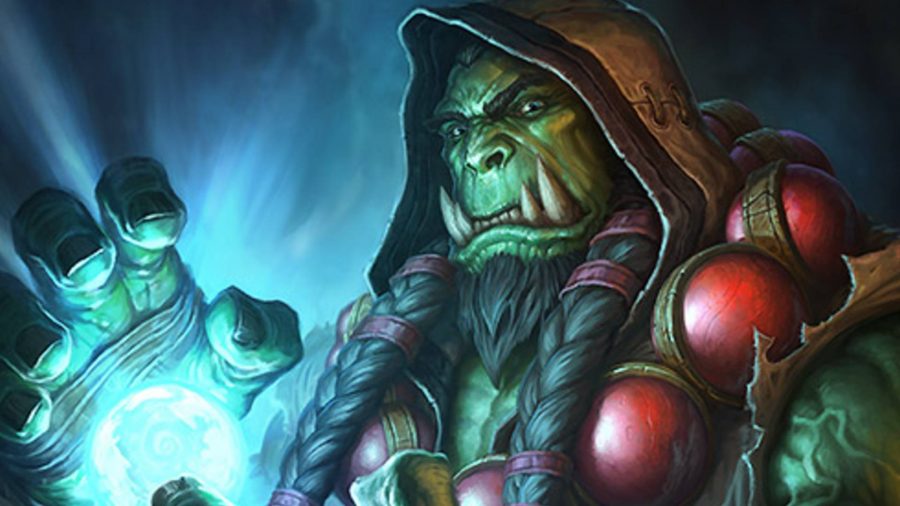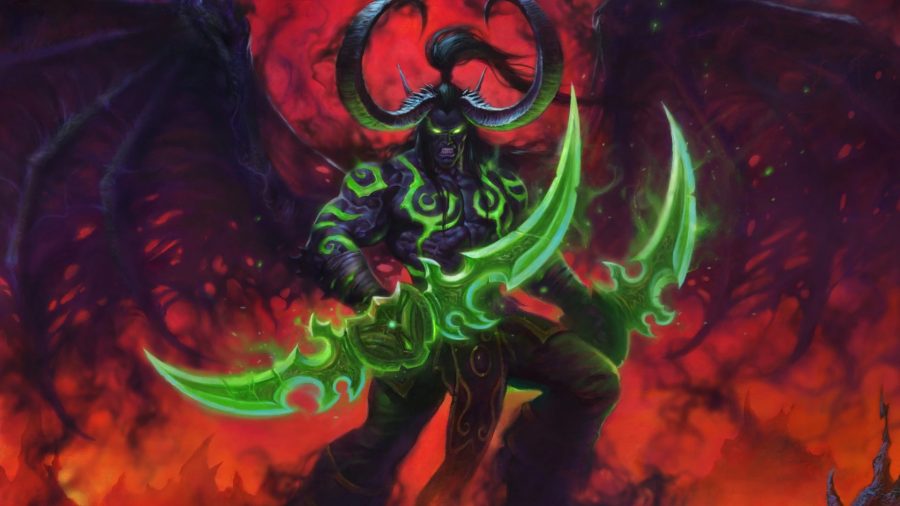Good morning, good afternoon, good evening, and welcome to the best Hearthstone decks for beginners. Trying out any new game for the first time can be confusing, especially when it asks you to make a deck from cards you don’t own yet. Give yourself a little time and practise, and you’ll be deckbuilding with the best of them.
Though it definitely helps to have a robust collection of cards, it’s not essential to own every legendary card in the game. Your opponent may have an expensive deck, but that doesn’t mean they are guaranteed to win. As long as you understand what cards your opponents could have and try to play around them as best you can, you should have no problem climbing the ranked ladder.
We’re going to show you some of the cheapest, easiest, and best beginner decks to master in Hearthstone. They’ll come from a range of classes and hopefully do the job you want them to do. Win. The current expansion is Forged in the Barrens which launched on March 30. Blizzard has introduced a number of balance changes to the game to keep things fresh, including the Forged in the Barrens miniset.
Best Hearthstone decks for beginners
The best Hearthstone decks for beginners are:
- Token Druid
- Elemental Shaman
- Face Hunter
- Deathrattle Demon Hunter
Token Druid
Deck Code: AAECAZICAA/lugPvugP5zAObzgO50gPw1AOJ4AOK4APR4QOK5AOM5AOt7AOz7AOunwTZnwQA
Dust Total: 2840
Fill the board with minions as early as turn three to destroy your opponent with this Token Druid deck. The perfect opening hand often consists of Gibberling and Adorable Infestation, allowing you to establish an early board right from the start. If your minions manage to stick, cards like Power of the Wild, Pride’s Fury, and Arbor Up can instantly reinforce your minions to make them difficult to remove.
Token Druid usually wins games by turn eight, but if you happen to find yourself in a drawn out battle, Solar Eclipse can turn the tide of any match. Solar Eclipse lets you play your next spell twice in the same turn, allowing you to buff an entire board of minions twice. In the best case scenario, this can result in +4 attack on seven minions.
The worst thing that can happen with this deck is that you start to run low on cards. Fortunately, Fungal Fortunes, Guess the Weight, and Guidance can give you a second chance to win the game when all seems lost. Token Druid is very cheap, surprisingly easy to pilot, and does well against the current batch of meta decks.
Elemental Shaman
Deck Code: AAECAaoIApzOA67eAw7buAOn3gOq3gOr3gOM4QPg7APh7AOt7gOv7gPj7gOU8AOMnwT5nwTjoAQA
Dust Total: 5280
The Forged in the Barrens miniset was a godsend to Shaman, finally bringing Thrall back into the meta for the first time in Year of the Gryphon. Wailing Vapor is an excellent early game minion with premium stats and an incredible effect: after you play an Elemental, gain +1 Attack. Shaman has access to powerful low-cost elementals like Cagematch Custodian, Arid Stormer, and Gyreworm which synergise with Wailing Vapor.
Elemental Shaman’s mana curve is low enough that you always have cards to play within the first few turns. Once you’ve established a board, Whack-A-Gnoll Hammer and Inara Stormcrash give you the extra reach you need to close out matches. There are enough removal cards like Lilypad Lurker to get rid of particularly tricky minions, and Dunk Tank which can decimate weak boards created by Token Druid and Face Hunter.
Primal Dungeoneer is a three cost minion introduced in the miniset that tutors an elemental minion if you draw a Nature spell. Every spell in this deck is a Nature spell, ensuring you’re able to draw two cards every time. This type of consistency has allowed Shaman to dominate the current meta.
Face Hunter
Deck Code: AAECAR8Cj+MDv6AEDqK5A/m6A/+6A9zMA5vNA6LOA4LQA7nSA7ThA4biA9zqA9vtA6mfBLugBAA=
Dust Total: 2920
If you want to crush any control deck on the ranked ladder, Face Hunter is the deck for you. Face Hunter’s mana curve is largely built around one and two drops, allowing you to play cards every turn without fail. Flood the board with cheap minions like Intrepid Initiate, Wolpertinger, and Demon Companion to establish early dominance in the game.
Though the introduction of the Core Set removed a lot of Hunter’s powerful finishers, there are a number of replacements which seem to fill the same role very well. Cards like Quick Shot and Piercing Shot give Hunter the extra power to close out games before control decks can reach their power turn.
This is the most optimal deck when it comes to climbing the ladder as games on average end before turn seven. Face Hunter is an easy deck to pilot for beginners and is one of the cheapest viable decks that could realistically take you to legend rank.
Deathrattle Demon Hunter
Deck Code: AAECAea5AwTZxgP66AO/7QOoigQN4c4Dyd0D8+MD9+gD+egDmOoDmeoDu+0DvO0Dvu0D/e0DgIUEpooEAA==
Dust Total: 5980
When Deathrattle Demon Hunter was first revealed, many players thought this archetype would never see play due to the lack of quality deathrattle minions. Not long after the launch of Forged in the Barrens, players began to realise the power of minions like Razorfen Beastmaster and Razorboar. These minions may look harmless at first, but they both have the ability to cycle minions without needing to spend any mana.
You can ensure you always have a deathrattle minion in your hand with Vengeful Spirit, a four mana 4/4 that tutors two deathrattle cards. Darkspear Berserker and Renowned Performer are decent cards for four mana, but they typically cost nothing thanks to Razorfen Beastmaster’s deathrattle. Death Speaker Blackthorn is an excellent finisher that floods the board with three powerful deathrattle minions.
This deck also runs the Watch Post package (Far Watch Post, Mor’shan Watch Post and Kargal Battlescar) as Demon Hunters can gain extra value from these minions. Watch Posts are unable to attack, but Demon Hunter can use Trueaim Cresent to force them into damaging enemy minions.
If you can’t close out the game using your deathrattle minions, Illidari Inquisitor will usually do the trick. This eight mana 8/8 rush minion may be one of the best cards in the game as it can clear most minions and deal eight damage to face in the same turn. Taelan Fordring and Skull of Gul’dan both help to draw your copies of Illidari Inquisitor in case you need to deal with a particularly big minion.
BUILDING A HEARTHSTONE CARD COLLECTION
One of the biggest changes made to Hearthstone in its entire history is the addition of a Core Set. This set replaces the Classic and Basic set of cards that have been in the game since it first launched. The Core Set consists of 235 cards from Hearthstone’s long history, as well as a few new additions to support the existing archetypes from that year.
Each year the Core Set will be switched out for new cards, giving Hearthstone a completely different feel in Standard play. The best part? The Core Set is completely free to all players, making it much easier to build a collection of cards for the first time.
Hearthstone may be free-to-play, but it is still a card game – a genre known for being expensive to get into. The primary way to acquire new cards is to simply play the game. Levelling any of the classes gives you cards from their classic set which is a positive. And winning three games in Play mode gives you ten gold which can be spent on card packs.
Whether that’s in Arena, Battlegrounds, or Ranked play, these modes will reward you with experience for the rewards track and gold. There are also weekly Tavern Brawls which rewards players with one classic pack.
Over the past few years, Blizzard has altered a number of systems to take some of the randomness out of acquiring Hearthstone cards. A big change to the game introduced duplicate protection, ensuring that players couldn’t receive more than two copies of the same card.
Prior to this feature, players could unpack several copies of rare, epic, and legendary cards, stopping them from unlocking cards they didn’t own. Hearthstone has a disenchant feature that allows you to trade in duplicate cards for arcane dust – this dust can be used to craft new cards.
If you haven’t played Hearthstone in a while, you might be confused by the new rewards track. In addition to the quest system, the rewards track grants players access to legendary cards, card packs, and even hero skins. You can pay money to unlock the premium track which grants many more rewards, though this only lasts for the duration of the current expansion.
Pay attention to the quests you get every day. If you don’t think you can complete the quest you can press a little redo button and it should give you a new option to try out instead. This also applies to weekly quests which tend to be much more difficult, but they are meant to be completed throughout the week.
Blizzard knows that it can get exhausting to try to earn the cards without spending some money, and over time it has made it a little easier to obtain the cards you want, and they’ll occasionally give you a card or two for free in between expansions. Keep an eye out for any promotions over the course of an expansion. Typically at the beginning and end, Blizzard will give out free legendary cards and packs to existing players.
These are the best Hearthstone beginner decks when starting out in the game. Eventually, you’ll be destroying enemies in no time, don’t worry! If you find Hearthstone isn’t your thing though, here are some of the other best card games on PC, or maybe you can learn how to play Hearthstone Battlegrounds instead.




No comments:
Post a Comment